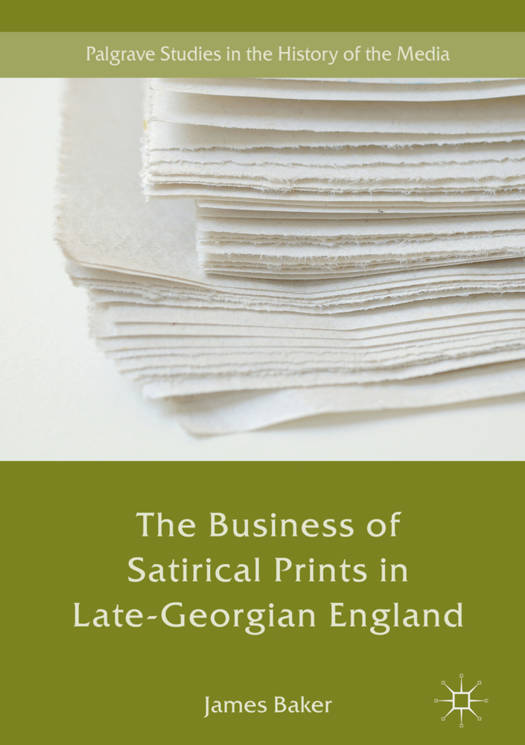
- Retrait gratuit dans votre magasin Club
- 7.000.000 titres dans notre catalogue
- Payer en toute sécurité
- Toujours un magasin près de chez vous
- Retrait gratuit dans votre magasin Club
- 7.000.0000 titres dans notre catalogue
- Payer en toute sécurité
- Toujours un magasin près de chez vous
Description
This book explores English single sheet satirical prints published from 1780-1820, the people who made those prints, and the businesses that sold them. It examines how these objects were made, how they were sold, and how both the complexity of the production process and the necessity to sell shaped and constrained the satiric content these objects contained. It argues that production, sale, and environment are crucial to understanding late-Georgian satirical prints. A majority of these prints were, after all, published in London and were therefore woven into the commercial culture of the Great Wen. Because of this city and its culture, the activities of the many individuals involved in transforming a single satirical design into a saleable and commercially viable object were underpinned by a nexus of making, selling, and consumption. Neglecting any one part of this nexus does a disservice both to the late-Georgian satirical print, these most beloved objects of British art, and to the story of their late-Georgian apotheosis - a story that James Baker develops not through the designs these objects contained, but rather through those objects and the designs they contained in the making.
This book explores English single sheet satirical prints published from 1780-1820, the people who made those prints, and the businesses that sold them. It examines how these objects were made, how they were sold, and how both the complexity of the production process and the necessity to sell shaped and constrained the satiric content these objects contained. It argues that production, sale, and environment are crucial to understanding late-Georgian satirical prints. A majority of these prints were, after all, published in London and were therefore woven into the commercial culture of the Great Wen. Because of this city and its culture, the activities of the many individuals involved in transforming a single satirical design into a saleable and commercially viable object were underpinned by a nexus of making, selling, and consumption. Neglecting any one part of this nexus does a disservice both to the late-Georgian satirical print, these most beloved objects of British art, and to the story of their late-Georgian apotheosis - a story that James Baker develops not through the designs these objects contained, but rather through those objects and the designs they contained in the making.
This book explores English single sheet satirical prints published from 1780-1820, the people who made those prints, and the businesses that sold them. It examines how these objects were made, how they were sold, and how both the complexity of the production process and the necessity to sell shaped and constrained the satiric content these objects contained. It argues that production, sale, and environment are crucial to understanding late-Georgian satirical prints. A majority of these prints were, after all, published in London and were therefore woven into the commercial culture of the Great Wen. Because of this city and its culture, the activities of the many individuals involved in transforming a single satirical design into a saleable and commercially viable object were underpinned by a nexus of making, selling, and consumption. Neglecting any one part of this nexus does a disservice both to the late-Georgian satirical print, these most beloved objects of British art, and to the story of their late-Georgian apotheosis - a story that James Baker develops not through the designs these objects contained, but rather through those objects and the designs they contained in the making.
Spécifications
Parties prenantes
- Auteur(s) :
- Editeur:
Contenu
- Nombre de pages :
- 232
- Langue:
- Anglais
- Collection :
Caractéristiques
- EAN:
- 9783319499888
- Date de parution :
- 21-04-17
- Format:
- Livre relié
- Format numérique:
- Genaaid
- Dimensions :
- 161 mm x 221 mm
- Poids :
- 421 g

Les avis
Nous publions uniquement les avis qui respectent les conditions requises. Consultez nos conditions pour les avis.






